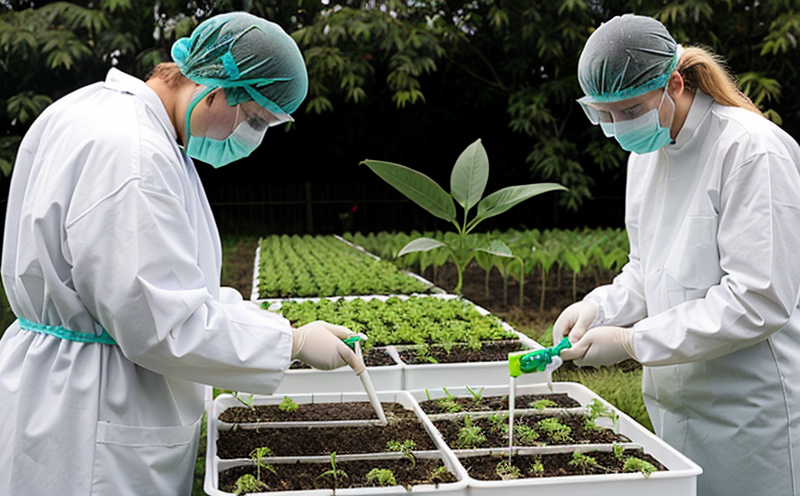Airborne Plant Pathogen Monitoring
In agriculture and forestry, plant health is critical to ensuring productivity and sustainability. Airborne pathogens can pose a significant threat to crops by spreading rapidly through wind or other vectors, leading to disease outbreaks that can devastate entire fields in short order.
The ability to monitor these airborne pathogens proactively can help growers implement targeted interventions before infection takes hold. Our Airborne Plant Pathogen Monitoring service uses advanced technologies and methodologies to detect, quantify, and identify potential threats from the air, ensuring that you have actionable intelligence at your disposal.
This service is especially important in regions prone to high winds or when there are known outbreaks of specific pathogens. By leveraging this technology, our clients can prevent costly losses due to plant disease while maintaining compliance with international standards such as ISO 13274:2016 and ASTA guidelines.
Our approach begins with a comprehensive assessment of the environment where your crops are grown. This includes analyzing local weather patterns, soil conditions, and historical data on previous outbreaks. From this information, we tailor our monitoring protocols to suit the specific needs of your operation.
The heart of our service lies in our advanced air sampling equipment, which captures airborne particles that may contain pathogens. These samples are then processed using highly sensitive molecular techniques like qPCR (quantitative polymerase chain reaction) and next-generation sequencing methods. The results provide detailed information about the types of organisms present in the atmosphere as well as their concentration levels.
Our team works closely with clients to interpret these data points into actionable insights that can inform decision-making processes related to pest management strategies, crop selection, and other operational considerations. With this knowledge, you can take steps early enough to protect your crops from potential harm.
Scope and Methodology
| Aspect | Description |
|---|---|
| Sampling Frequency | Our monitoring protocol includes regular sampling sessions based on seasonal changes and historical patterns of pathogen activity. Typically, we collect samples every two weeks during peak growing seasons. |
| Type of Sample Material | The primary sample consists of air filters collected from strategically placed devices throughout the monitored area. Additionally, swabs taken from surfaces where pathogens might land are analyzed for added context. |
| Testing Techniques | We employ multiple techniques including quantitative PCR (qPCR), which allows us to measure the amount of DNA/RNA present in each sample, and next-generation sequencing (NGS) for broader identification of microorganisms. |
Our process also involves collaborating with local meteorologists to understand wind patterns that could facilitate pathogen dispersal. This collaboration helps us refine our sampling strategy further, ensuring we capture a representative sample set over time.
| Acceptance Criteria | Description |
|---|---|
| Detection Thresholds | We establish detection thresholds based on acceptable risk levels set by industry standards. If pathogen concentrations exceed these limits, immediate alerts are sent to relevant personnel. |
| Validation Protocols | All testing methods undergo rigorous validation processes before being deployed in the field. This ensures accuracy and reliability of results. |
Benefits
Early Detection: Identify airborne pathogens early, enabling timely intervention before they cause significant damage to crops.
Proactive Management: Use real-time data to make informed decisions regarding pest control and disease mitigation strategies.
Improved Compliance: Ensure adherence to international standards such as ISO 13274:2016, ASTA guidelines, and other relevant regulations.
Enhanced Crop Protection: Protect your valuable investments by preventing costly outbreaks through proactive measures.
Why Choose This Test
Selecting our Airborne Plant Pathogen Monitoring service offers several key advantages over traditional methods of disease control. One major benefit is the ability to detect pathogens long before they reach your crops, giving you ample time to implement preventive measures.
Our advanced technology provides more accurate and detailed information compared to less sophisticated tools commonly used in agriculture today. This enhanced accuracy translates into better decision-making capabilities for stakeholders involved in managing plant health issues.
In addition to early detection, our service supports ongoing monitoring efforts that help track changes over time, providing valuable insights into seasonal trends or long-term impacts of climate change on pathogen behavior.





